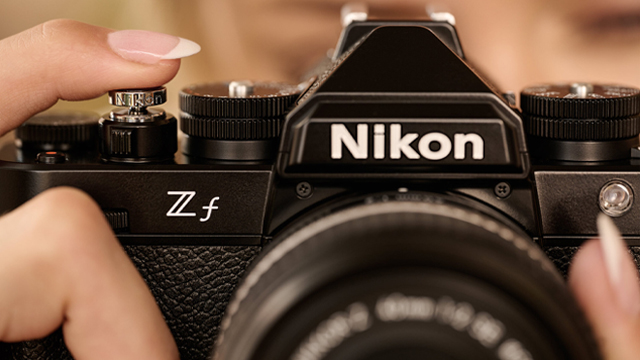A couple of years back, the Nikon D40 pioneered the budget DSLR camera segment. With its great performance at a low price point, more and more consumers got interested in this segment, which caused a flurry of launches from Nikon as well as other manufacturers. But what about the enthusiast consumers who need more than the basic features that are provided by the likes of Nikon D40 and D60, but don’t want to invest in a semi-professional model like D90? With the Nikon D5000 that gap was finally bridged.

The body design is quite similar to the Nikon D60 , with a few major changes. The similarities lie in the button placement, single wheel operation and its use of AF-S lenses, which means that the autofocus motor is inside the lenses instead of the body. The biggest and the most apparent physical distinction lies in the inclusion of a tilt-n’-swivel live-view screen in the D5000.

The poly-carbonate body feels a bit plasticy, like in lower-end Nikon DSLR cameras, but at the same time, it seems quite sturdy. It’s adequately sized at 127x104x80 mm and heavier than the lower-end alternatives at 590 g. Since the D5000 is at heart a consumer model, most of its features are accessed via the shooting menu. It’s pretty obvious that if direct-access buttons are such a big requirement for you then you should be considering the higher-end options like the D90 instead.

Inside, the D5000 uses the same 12.3 megapixel CMOS sensor that the D90 uses, which makes a marked improvement in the picture quality when compared to the CCD sensors in the lower-end Nikon DSLR cameras, but more on the image quality later.
__PAGEBREAK__
Among the consumer DSLR cameras, we’ve tested I personally found the live-view to be more of a gimmick rather than a feature I would actively use. The live-view in the D5000 was the first that I actively used nearly as much as the optical viewfinder. Firstly the screen (though only 2.7-inches and comparatively low-res at 270,000 dots) works like a charm with live-view. Also, the autofocus in live-view mode happens with the standard half-shutter press, which feels natural, as compared to the awkward zoom-out button press for autofocus in the
Canon EOS 500D
. The only drawback with the live-view mode is that it suffers from quite a bit of shutter lag.

The D5000 also shoots video at a maximum resolution of 1280x720 (720p), and the good part is that it can shoot video in any mode, by simply pressing the Ok button in live-view mode. The autofocus is fixed in video mode, but you do have the option to initiate it while recording by doing the half-shutter release press while shooting. Though it’s not as good as the video quality of a good quality HD camcorder, it is quite usable and better than the lower-end HD camcorders.

The 11-point autofocus should be an easy way to separate the D5000 from the lower-end Nikon DSLR cameras that feature a very unsatisfactory 3-point autofocus. With 11 points, you have a pretty good control of getting the right focus in every shot, rather than framing your shot around the point of focus.
Other features include Active-D lighting, in-camera RAW processing and some pretty good post-processing options like funky filter effects. I was especially surprised to see how well the fish-eye filter worked in most scenarios.

__PAGEBREAK__
If there’s one thing I would always recommend Nikon DSLR cameras for, it would be their high ISO performance. The Nikon D5000 is a perfect example of that. Night shots taken with higher ISO settings gave negligible noise, even though I was using the 18-55mm kit lens for most of the tests.

The contrast levels were spot on in the pictures I clicked from the D5000, which made a lot of the images shot usable without even the basic touch-ups in post processing. The colors looked a lot better as well because of this.

When it came to landscape shots, I was pretty impressed with how well the Nikon D5000 captured the minutest of details without over-sharpening the results.

The power off to shot time was completely negligible, and probably a lot faster than your finger would take to move from the power switch to the shutter-release. In burst mode, the D5000 shot at a pretty good 4fps.

At its price of Rs. 49,000 (MRP Rs. 57,995) the Nikon D5000 gives you a great bang for your buck with a range of features that would immediately escalate an amateur into the serious photography territory. The camera boasts a great feature set, produces excellent results, and has the little bells and whistles that makes it friendly to the casual user as well. It’s pretty hard not to recommend a camera like this.
)
)
)
)
)